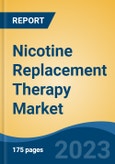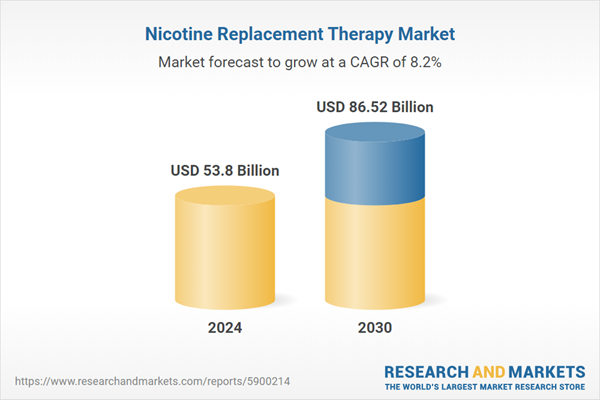Speak directly to the analyst to clarify any post sales queries you may have.
10% Free customizationThis report comes with 10% free customization, enabling you to add data that meets your specific business needs.
Key Market Drivers
Rising Health Awareness and the Harmful Effects of Smoking
The increasing awareness of the health risks associated with smoking is a primary driver of the Global Nicotine Replacement Therapy (NRT) Market. As consumers become more informed about the dangers of tobacco use, demand for effective smoking cessation solutions continues to rise. This shift in consumer behavior, coupled with public health initiatives and regulatory support, is creating a strong market environment for NRT products such as nicotine patches, gums, lozenges, inhalers, and nasal sprays. According to the American Heart Association (AHA), smoking-related diseases are responsible for over 440,000 deaths annually in the United States.A significant concern is that the majority of new smokers are children and adolescents, highlighting a critical public health challenge. Smoking significantly elevates the risk of severe health conditions, including lung diseases such as lung cancer and emphysema, as well as cardiovascular diseases like heart disease and stroke. Public health campaigns, scientific studies, and widespread media coverage have significantly increased consumer awareness of the adverse effects of smoking.
Tobacco use has been linked to a range of serious health conditions, including Smoking contributes to high blood pressure, heart attacks, and strokes. Smoking is a major contributor to cardiovascular disease, accounting for 20% of all smoking-related deaths. The risks are even more pronounced for women over 35 who smoke while taking oral contraceptives, as they face a significantly higher likelihood of heart disease, stroke, and blood clots. Additionally, cigarette smokers are 2 to 4 times more likely to develop heart disease compared to nonsmokers, creating a substantial burden on healthcare systems and workplace productivity.
Key Market Challenges
Regulatory Hurdles and Stringent Approvals
One of the primary challenges facing the NRT market is the lack of uniform regulations governing the sale and distribution of NRT products worldwide. Each country has its own regulatory framework, which can create complications for manufacturers trying to expand globally. Variances in regulations can lead to delays in product approvals and market entry.NRT products often require rigorous clinical trials and safety assessments for regulatory approval. These processes can be time-consuming and costly. Delays in approvals can hinder the introduction of new and innovative NRT products, slowing market growth. The tobacco industry is a powerful entity with significant influence in some regions. It may lobby against NRT products as they can potentially reduce smoking rates. This lobbying can result in stricter regulations or negative public perceptions of NRT, hindering market growth.
In some cases, NRT products are erroneously categorized as tobacco products, subjecting them to tobacco-related regulations and taxes. This misclassification can increase costs for both manufacturers and consumers, making NRT less accessible.
Key Market Trends
Increasing Adoption of E-Commerce and Telehealth Services
The rise of e-commerce and telehealth services has transformed the way consumers access NRT products and smoking cessation support. E-commerce platforms provide a convenient and discreet way for individuals to purchase NRT products without visiting physical stores. Telehealth services offer remote consultations with healthcare professionals who can prescribe NRT products and provide personalized guidance for quitting smoking.This trend has significantly expanded the reach of NRT products, making them more accessible to a broader audience. It has also enhanced user convenience, particularly during the COVID-19 pandemic when in-person visits to healthcare facilities were limited. As telehealth becomes more mainstream, it is likely to drive continued growth in the NRT market.
Key Market Players
- Cipla Inc.
- Pfizer Inc.
- Johnson & Johnson Services, Inc.
- Philip Morris Products S.A
- British American Tobacco p.l.c.
- Japan Tobacco, Inc.
- Imperial Brands PLC
- Glenmark Ltd
Report Scope:
In this report, the Global Nicotine Replacement Therapy Market has been segmented into the following categories, in addition to the industry trends which have also been detailed below:Nicotine Replacement Therapy Market, By Product:
- Nicotine Replacement Therapy (Inhalers, Gum, Transdermal Patches, Sublingual Tablets, Lozenges, Others)
- E-cigarettes
- Heat-not-burn Tobacco Products
Nicotine Replacement Therapy Market, By Distribution Channel:
- Offline
- Online
Nicotine Replacement Therapy Market, By Region:
- North America
- United States
- Canada
- Mexico
- Europe
- France
- United Kingdom
- Italy
- Germany
- Spain
- Asia-Pacific
- China
- India
- Japan
- Australia
- South Korea
- South America
- Brazil
- Argentina
- Colombia
- Middle East & Africa
- South Africa
- Saudi Arabia
- UAE
Competitive Landscape
Company Profiles: Detailed analysis of the major companies present in the Global Nicotine Replacement Therapy Market.Available Customizations:
With the given market data, the publisher offers customizations according to a company's specific needs. The following customization options are available for the report.Company Information
- Detailed analysis and profiling of additional market players (up to five).
This product will be delivered within 1-3 business days.
Table of Contents
Companies Mentioned
- Cipla Inc.
- Pfizer Inc.
- Johnson & Johnson Services, Inc.
- Philip Morris Products S.A
- British American Tobacco p.l.c.
- Japan Tobacco, Inc.
- Imperial Brands PLC
- Glenmark Ltd
Table Information
| Report Attribute | Details |
|---|---|
| No. of Pages | 182 |
| Published | March 2025 |
| Forecast Period | 2024 - 2030 |
| Estimated Market Value ( USD | $ 53.8 Billion |
| Forecasted Market Value ( USD | $ 86.52 Billion |
| Compound Annual Growth Rate | 8.2% |
| Regions Covered | Global |
| No. of Companies Mentioned | 8 |









